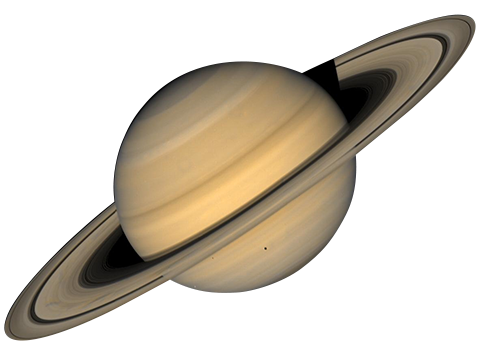Saturn Facts
Planet Profile
| Type | Gas Giant |
| Age | 4.503 billion years |
| Length of Year | 29.4571 Earth year |
| Satellites | 62, known |
| Radius | 36,184 mi |
| Mass | 5.6834×1026 kg |
| Volume | 8.2713×1014 km3 |
| Orbit Speed | 9.68 km/s |
| Dist. from Sun | 1.4 billion km, ave |
Below are some of the facts about geology:
- Saturn is the 6th planet of the solar System. It is made up of a huge mass of gases. It has no surface to place a feet on, and is a gas giant. It’s also the most beautiful planet on the solar system for its fascinating rings.
- The planet has a really low density. Its density is 0.687 gm/cc, which is really low compared to water with density of 1g/cc, and earth with density of 5.52 gm/cc. if it ever got a large pool of water to float on, then it would float on water.
- The spin of Saturn is really fast along its axis. That’s why the shape of the planet has become like a flattened ball. It’s called oblate shape.
- The distance from the center of Saturn to its poles is 54,000, and the distance from the center to the equator is 60,300 km. This makes for a radius difference of 6,300 km between the poles and equator.
- To date only 4 spacecrafts have visited Saturn. They are: Pioneer 11, Voyager 1 and 2, and Cassini. Cassini reached the closest by entering the orbit encircling Saturn and took many photographs of the rings, moons, and the surface of the planet.
- 62 moons of Saturn has been discovered and counted to date. Out of them the largest is Titan. Most others are small, and just a kilometer or few in size. Cassini found a few moons while taking pictures, and yet many are believed to be discovered.
- The exact time Saturn takes to spin around its axis and complete a day is 10 hours, 32 mins, and 35 seconds on average.
- Saturn completes one rotation around the sun in its orbit in 30 Earth years.
- The rings of Saturn sometimes seem to disappear, and they can’t be seen properly. Sometimes they appear really well, and fully open, while in 2008-2009 they could not be seen. It’s anticipated that again in 2024-2025 they may not be visible.
- Saturn is a giant planet, and it can be seen with the naked eyes. It’s seen as a bright object. When you see it with a telescope you can see the moons and rings vividly.
- Enceladus is a moon of Saturn, which may have life on it. That’s because Cassini once discovered that in this moon ice geysers are blasting off, which indicates presence of liquid water beneath the surface. Where there is liquid water the chances of life is higher.
